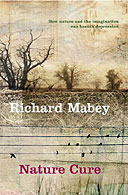"Two great wars demanded and bequeathed regimentation, science lent her aid, and the wildness of these islands, never extensive, was stamped upon and built over and patrolled in no time. There is no cave in which to curl up, and no deserted valley." E.M. Forster
"...that cavernous, deadened heart of south England which now runs more or less uninterrupted from Norwich all the way to Bristol." Mark Cocker
"This is one of the few places left in England where you can actually open your ears and listen. Everyday we are bombarded by sound and noise, but so rarely have the opportunity of really listening." Chris WatsonEven Robert Macfarlane, in his generally uplifting paean to The Wild Places, gives the impression that only a skilled landscape horse-whisperer such as he is able to locate special places of wildness:
"The losses to the wild places of Britain and Ireland were unignorable, and the threats that they faced - pollution, climate change - appeared greater in number and vigour than ever before. But I knew that the wildness had not entirely vanished."The credo of exclusivity and a diminishing stock of remote places is taken up by Christopher Walton:
"Even in England there are still places where it is possible to feel as if you are the first to stand there. These places are few and far between, lost deep in the hills where nobody ever goes, or hemmed in by humming railway lines; but if you look hard...you will find them."
What puzzles me about much fine writing on landscape, as illustrated above, is that it seems to ignore or be in denial of a simple truth: remote places are all around and do not require arcane or esoteric knowledge in order to be enjoyed; just a map and a bit of curiosity. Maybe celebrating the remarkable, diverse and accessible geography within our midst is too far from the overriding narrative of shrinking biodiversity, ruptured ecosystems, climate change and urbanisation; fiddling while Rome burns.
My contention would be that if people feel that wildness has gone, been corralled into carefully stage managed nature ghetto's or is simply out of bounds, then how can we ever expect them to feel a sense of value for the areas of natural tranquility and beauty that surround them? And, by extension, feel a personal - rather than abstract - stake in pulling back from the pillage of the planet's natural resources?
So here is a gently dissenting voice; a hosanna to exploring and revisiting special places:
"On springy heath, along the hill-top edge/ Wander in gladness, and wind down, perchance/ To that still roaring dell, o'erwooded, narrow, deep/ And only speckled by the midday sun." This Lime-Tree Bower My Prison, Samuel Taylor Coleridge





